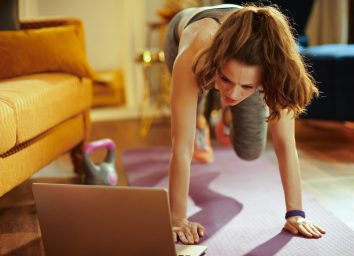Lean-Body Secrets from Exercise Experts Over 50
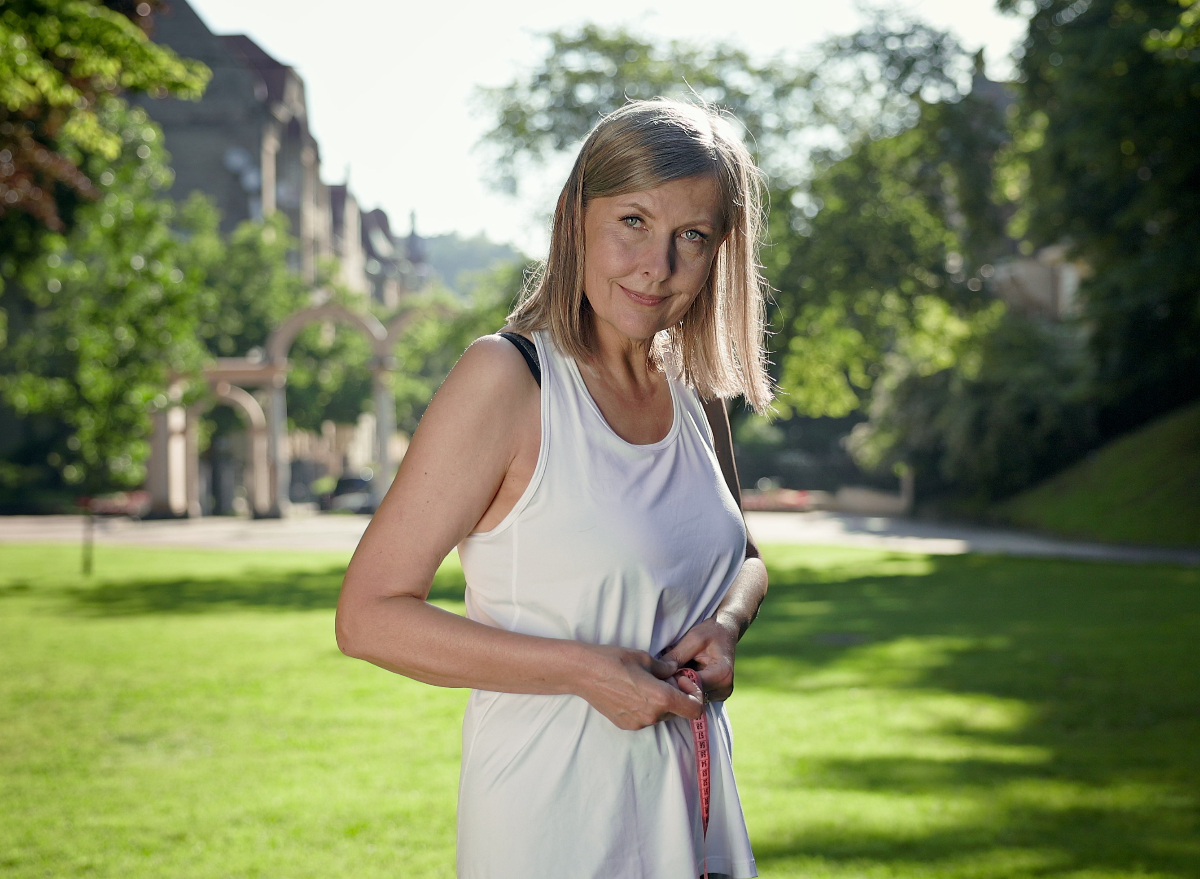
It’s certainly not impossible to get a lean body after 50, but it’s simply a fact that it takes a little more effort. After all, once you reach age 35, you start to lose anywhere from 3 to 5% of your body mass every decade—and what compounds your loss of muscle mass is a lack of proper training and discipline. As Melina Jampolis, MD, recently explained to us at ETNT Mind+Body, by the age of 80, many people can expect to have lost roughly 30% of their muscle mass.
“An example I like to use with [my older clients] is if you go to the park, you’ll see a seven-year-old absolutely sprinting and jumping everywhere,” Mark Jerling, a 59 year-old former car salesman in the UK who has recently transformed into a successful personal trainer, explained to The Telegraph. “The 20-year-old might be walking briskly or jogging, and then a typical 50-year-old will be walking slowly. One of the reasons we lose muscle as we age is because we’re training less.”
If you’d like to change that—and to get that lean body after 50 with a dedicated training regimen—read on, because here are some lean-body secrets straight from some fitness pros who are over 50 themselves. And for more great advice for people of any age, don’t miss the One Secret Side Effect of Walking You Never Knew, Says New Study.
Strength Train at the Gym, Take Daily Walks at Home
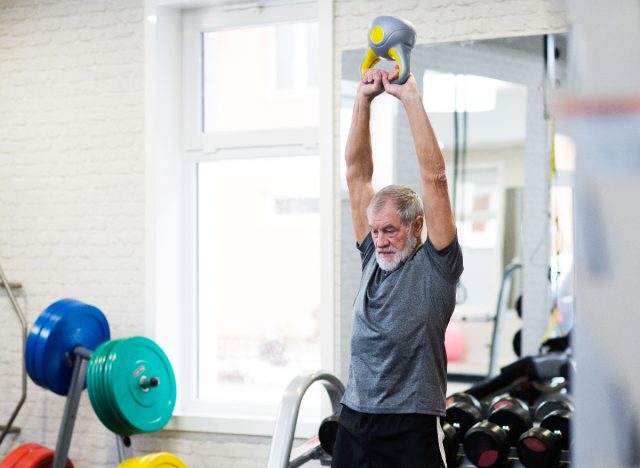
If getting lean is your goal, Pam Sherman, a 54 year-old trainer and health coach, advises you to strength train at least three to four days per week and prioritize your lifting sessions over steady-state cardio exercise such as jogging or cycling for long distances. “When trying to get and stay lean, lifting weights is your best bet!,” she says.
That being said, you need to ensure that you’re still moving around even when you’re not “exercising.” “You need to also stay active during the day,” she says. “Make sure you get up and walk every 90 minutes or so. Add in a morning walk most days of the week. Our bodies are meant to walk, not sit all day. Everything you’ve read before is true: Park farther away in the parking lot, take the stairs. More daily movement is always best for our bodies.”
Sara Kooperman, JD, CEO of SCW Fitness Education and Water in Motion, who is over 60, agrees. “My daily regime includes walking my golden retriever, Buster, for 30 minutes to an hour each day,” she previously explained to Prevention. “This works out to be 2-4 miles. I typically do this when I have a conference call, because then I am not distracted by family, computers, emails, staff, or other interruptions. It helps me focus more intently and creatively.”
For some great strength-training moves to try, see here for the Secret Exercise Tricks for a Better Body After 40.
Get a Training Partner
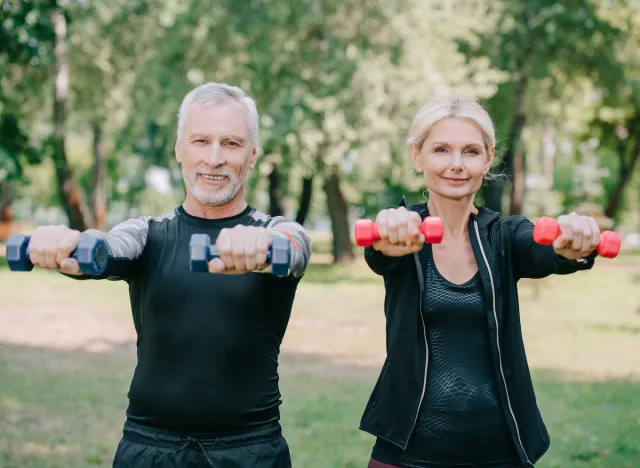
When it comes to getting fit after 50, Raj Deu, M.D., a sports medicine expert at Johns Hopkins Medicine, advises you to not go at it alone. “If you work out with a friend or your spouse, you generally tend to exercise more regularly because you have that person to coax you,” he says. “Even owning a dog will get you out and walking.”
According to a study published in APA PsycNet, working out with your friends—or even joining a fitness class—will also make your exercise more fun and feel like less work. “Specifically, during classes in which exercisers’ perceptions of groupness were relatively higher, exercisers reported more recalled enjoyment, affective valence, and exertion,” says the study.
Furthermore, you’d be wise to work out with a friend who is fitter than you are. (Seriously!) A 2016 study published in the journal Obesity found that people who are overweight have a higher chance of dropping weight if they surround themselves with a social network that is fitter than they are. After all, there’s a reason training with others is The Single Most Effective Way to Work Out Every Day, Say Psychologists.
Take Advantage of Compound Lifts
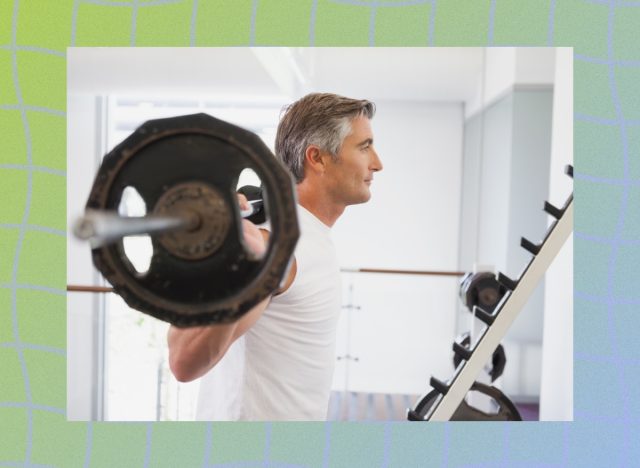
What types of lifts you should you focus on when strength training? According to Robert Herbst, a personal trainer and 19-time world champion powerlifter who supervised the drug testing at the 2016 Rio Olympic Games, you should focus on compound movements, which recruit multiple muscle groups for you to complete the movement, which will result in a more total-body workout. “I am 63 and my abs look like a tic-tac-toe board,” he told us. “The best way to burn fat is to do heavy compound movements such as squats, lunges, and deadlifts, all of which raise your metabolism and work the abs statically.”
The compound movements, he says, will raise your metabolism by working your major muscle groups, which will then be repaired after exercise and get bigger. With more muscle, you’ll be able to burn even more fat. For some great compound movements—and how to do them—straight from our own trainer, Tim Liu, C.S.C.S., don’t miss the Secret Exercise Tricks for Getting a Leaner, Fitter Body After 40.
Stretch More Than Did in Your Younger Years
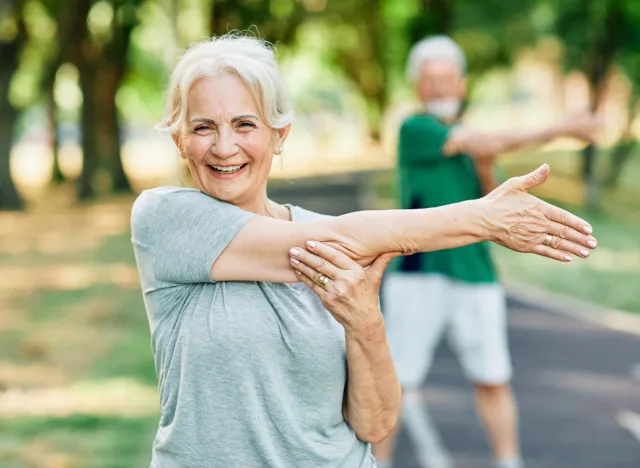
When you were in your 20s, you could easily run a 10K or hit the gym without partaking in a dedicated stretching regimen. In your 50s, when your muscles and tendons have lost some of their elasticity—and your joints naturally begin to stiffen—you simply can’t get away with it. What’s worse, you’ll be putting your body at risk of injury. “As our bodies age, our tendons get thicker and less elastic. Stretching can counter this and help prevent injury at 50-plus. Remember to stretch slowly; do not force it by bouncing,” says Johns Hopkins’ Deu. For some great yoga stretches to try, check out the Essential Yoga Stretches for People Over 40.
Always Make Your Bed in the Morning

OK, you don’t necessarily have to make your bed every morning, but if you’ve got lofty goals—such as getting lean after 50—it’s important that you set the tone for the day from the very minute you wake up. According to Petra Kolber, happiness expert, author of The Perfection Detox, and a woman in her late 50s, a healthy lifestyle starts before breakfast.
“My daily wellness habit begins with my morning,” she explained to Prevention. “When I protect the first hour of my day and use it well, the rest of my day seems to always unfold with more ease. I try not to look to look at my computer or phone (I charge my phone outside of my bedroom) until at least an hour into my day. I use this golden hour to set my intention and my mindset to create an extraordinary day. I start by thinking of three things that I am looking forward to that day. This primes my brain to seek more of the good. I then sit quietly and meditate for 5-10 minutes, journal for a few minutes, or pick up the latest book I am reading. Next, I make my coffee and use the process as another mindfulness ritual. I then go and make my bed—I always make my bed.”
Know That You Can’t Out-Train a Bad Diet
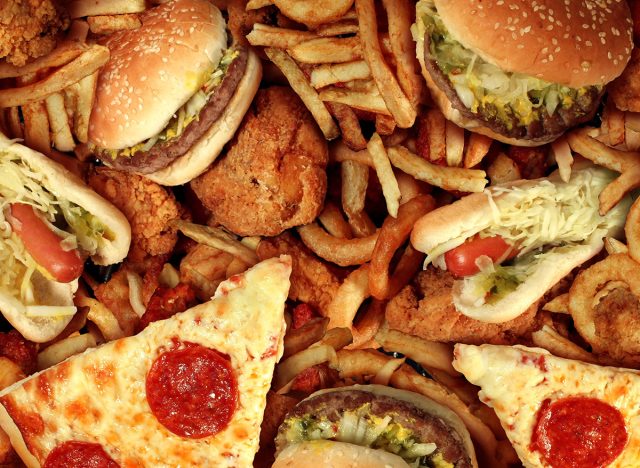
It’s an old cliché, but it’s true. As Jerling explained to The Telegraph, regardless of how hard you’re working your body at the gym, don’t expect meaningful results if you’re not also altering your diet. “What’s really changed my body shape is diet,” he explained. “I entered a bodybuilding contest about eight years ago, and I had to totally change what I ate to get my body to where it needed to be to compete. Everyone says you can’t out-train a bad diet, but until you actually see it, it’s hard to understand it. People come to me and they say they want to lose weight— I say well, I can get you stronger and I can get your muscles to work better for you. But the only way you can lose the weight is with good nutrition.” For more on the foods you should eat, don’t miss the Essential Foods for Weight Loss.
Try Tai Chi
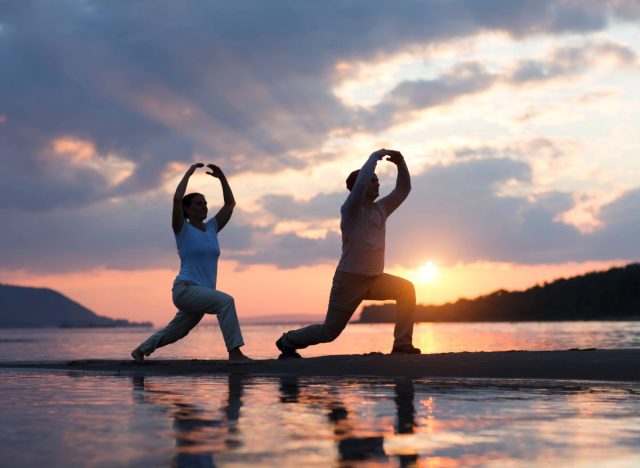
Now, this tip doesn’t come from a fitness expert who is over 50, but we’re including it anyway. A new study published in Annals of Internal Medicine found that test subjects who performed tai chi experienced a loss in body fat around their waist and lost weight overall. “Tai chi is an effective approach to reduce [waist circumference] in adults with central obesity aged 50 years or older,” concludes the study.
What’s more: According to the health experts at The Mayo Clinic, tai chi is also shown to help “enhance the quality of sleep, enhance the immune system, help lower blood pressure, improve joint pain, improve symptoms of congestive heart failure,” and “improve overall well-being.” And for more great exercise advice, check out The 15-Second Exercise Trick That Can Change Your Life.

